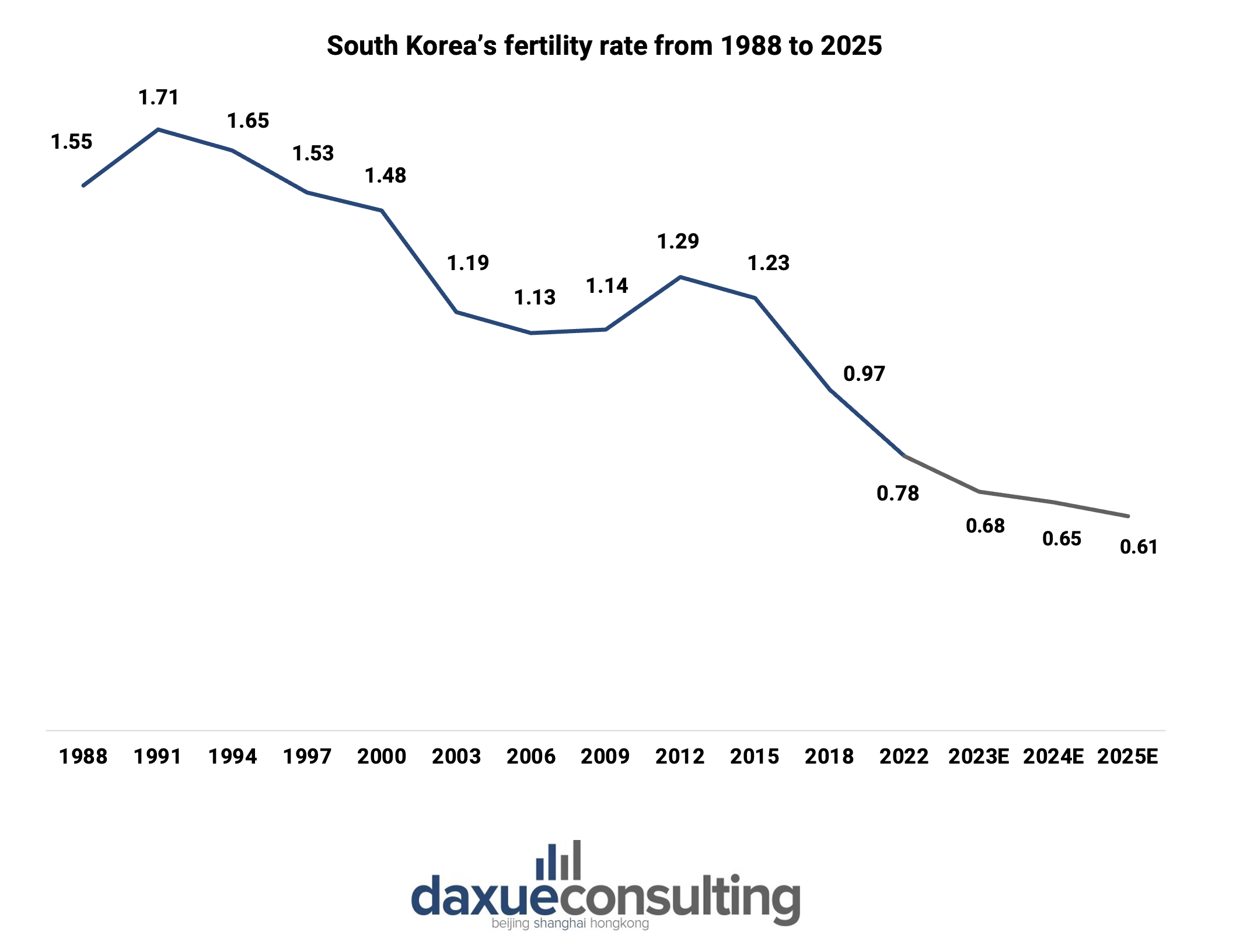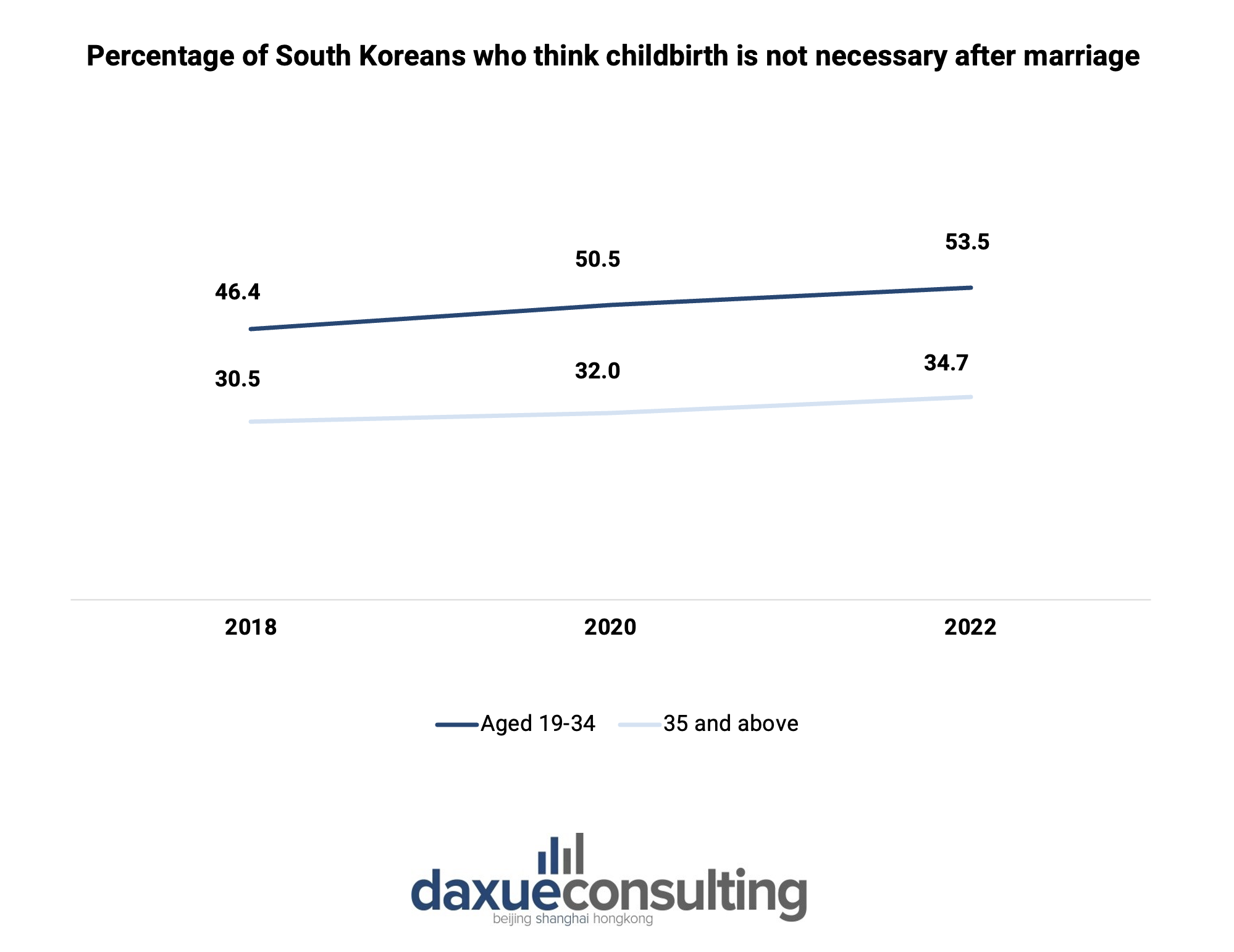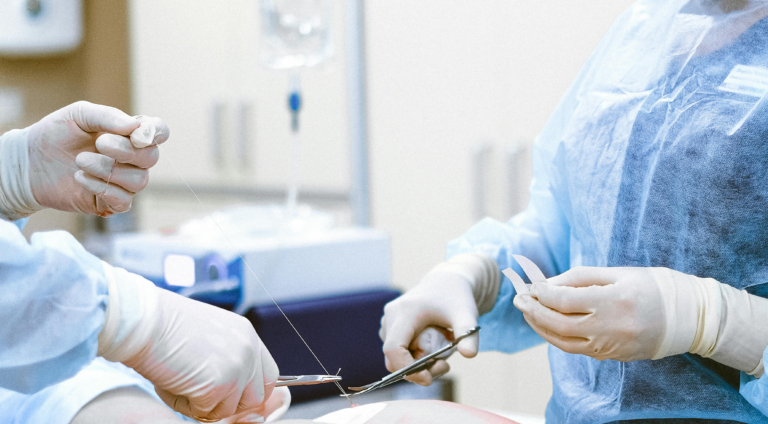South Korea faces pressing social issues as its fertility rate continues to decline. In 2022, South Korea’s fertility rate dropped to 0.78, the lowest the country has ever seen and the lowest in the world. This alarming trend persisted when it fell even further to 0.7 in the second quarter of 2023, renewing the country’s lowest record. Having reached its population peak in 2020 with 51.83 million people, the country’s population is expected to decrease faster every year. According to Statistics Korea, the median age is projected to reach 62.2 years old in 2070, coinciding with population a decrease to 37.66 million.
Download our full Korea Consumer Trends report


Young South Koreans are not economically ready for marriage and children
Economic factors stand as the primary reason for why many young couples are not planning to have kids. Young South Koreans are experiencing economic pressure due to rise in housing prices. The increase in income has not keep up with the rate at which housing prices are rising. The growing disparity between income and housing costs is causing young couples to delay marriage and family planning.
Fees for raising children are also on the rise in South Korea. A growing number of children are taking more private lessons, with 78.3% of them taking private lessons in 2022. In Korea, private lessons are essential for students to keep up with the competitive college admission system. Furthermore, the average age for entry-level employees continues to increase due to high unemployment rates and more time spent on employment preparation. This means that people are earning income at an older age. Coupled with rising costs on raising children, people are feeling pressured to reconsider having children.
Many South Korean companies lack family-friendly environments
Unlike in the past when most South Korean women were housewives, more women are pursuing their own careers. However, having children often entails having a career break, which involves taking a pause in economic activities. While some companies provide parental leave systems, it can be challenging for companies to provide more sufficient parenting environments for the employees due to the associated expenses on human resources. Korean chaebols like Samsung and LG provide efficient parenting environments to the employees, but they employ only about 11% of South Korea’s working population. According to a survey conducted by Korean job searching platform Incruit, 70% of respondents expressed positive inclination towards having more children if companies offer more supportive parenting environment. To boost South Korea’s fertility rate, the active support of companies is essential.
Young people’s perception of marriage and children is changing
Young Koreans’ perceptions of marriage and children are not the same anymore. According to Hankook Research, almost half of respondents under 30 years old claim that they could live without having children. The primary reasons for this response were the challenges of ensuring children’s happiness in Korean society and the desire to avoid economic pressure from raising children. Marriage and childbirth are no longer seen as necessity, but rather a choice by young people.

Despite the South Korea’s low fertility rate, kids industry continues to grow
The decreasing birth rate hasn’t hindered the growth of child-related industries. The market size for baby products has seen significant growth, increasing from USD 1.77 billion in 2015 to USD 2.95 billion in 2020. With fewer children in families, kids are becoming the center of attention. Since parents have fewer children to take care of, they focus more on their only child and try to provide the best for them.
In the future, the MZ generation will be the main consumers of children’s apparel market. Young parents are more familiar with the fashion market than the previous generations and are willing to buy a greater variety of clothing for their children. This trend has led to the rise in more stores oriented for children. In 2022, Nike opened its first offline Nike Kids store in South Korea. Fashion brand Musinsa gained success with “family look”, creating kids’ outfits in adult fashion styles.

More people are having pets instead of children
With fewer people getting married, one-person households in South Korea continue to rise. Pets provide companionship and help alleviate loneliness, leading to growing number of South Koreans living alone choosing to have pets. As more people live alone, products like pet cameras and automatic pet feeders become essential tools for pet owners. Additionally, young people tend to spend more money on pets. According to South Korea’s Ministry of Agriculture, Food and Rural Affairs, people in their 20s spend around USD 155 on pets monthly, while the average spending for South Koreans on pets is around USD 110. This could be attributed to young people using more pet services, such as pet schools and pet beauty stores, than older generations. With increasing loneliness in Korean society, the domestic pet industry is expected to grow even further in the future.
Self-indulgence and eldercare: The choices arising from South Korea’s fertility rate
More South Korean couples are identifying themselves as DINKs (딩크족), households with two incomes and no children. Without children, people are more willing to spend more money on themselves. Leisure activities and related products could gain popularity from DINK consumers. Couples are expected to focus more on their lives and explore new activities that bring them joy. Freed from parenting responsibilities, couples have more time and money for leisure activities such as sports, traveling, and camping.
In the past, going to retirement homes implied that children were neglecting their responsibilities towards their parents. However, with the luxurious lifestyle and sufficient infrastructures modern retirement homes provide, many South Koreans are expressing a positive attitude toward retirement homes. As a rapidly aging society, South Korea’s demand for premium retirement homes (실버타운) is increasing. People are willing to invest in premium retirement homes as they don’t have to give their properties to others and can use all their money for themselves after retirement.
South Korea’s demographic conundrum: Key insights into fertility challenges and opportunities
- South Korea’s fertility rate was 0.78 in 2022, lowest number the country has ever experienced.
- Economic difficulties and changing perceptions of marriage are discouraging young couples from getting married and having children.
- Despite South Korea’s current fertility rate standard, the kids’ industry is growing.
- The pet market is growing steadily as more South Koreans opt to raise pets instead of having children.
- As DINK (Double Income, No Kids) couples, they are expected to spend more money on themselves rather than on raising children.





